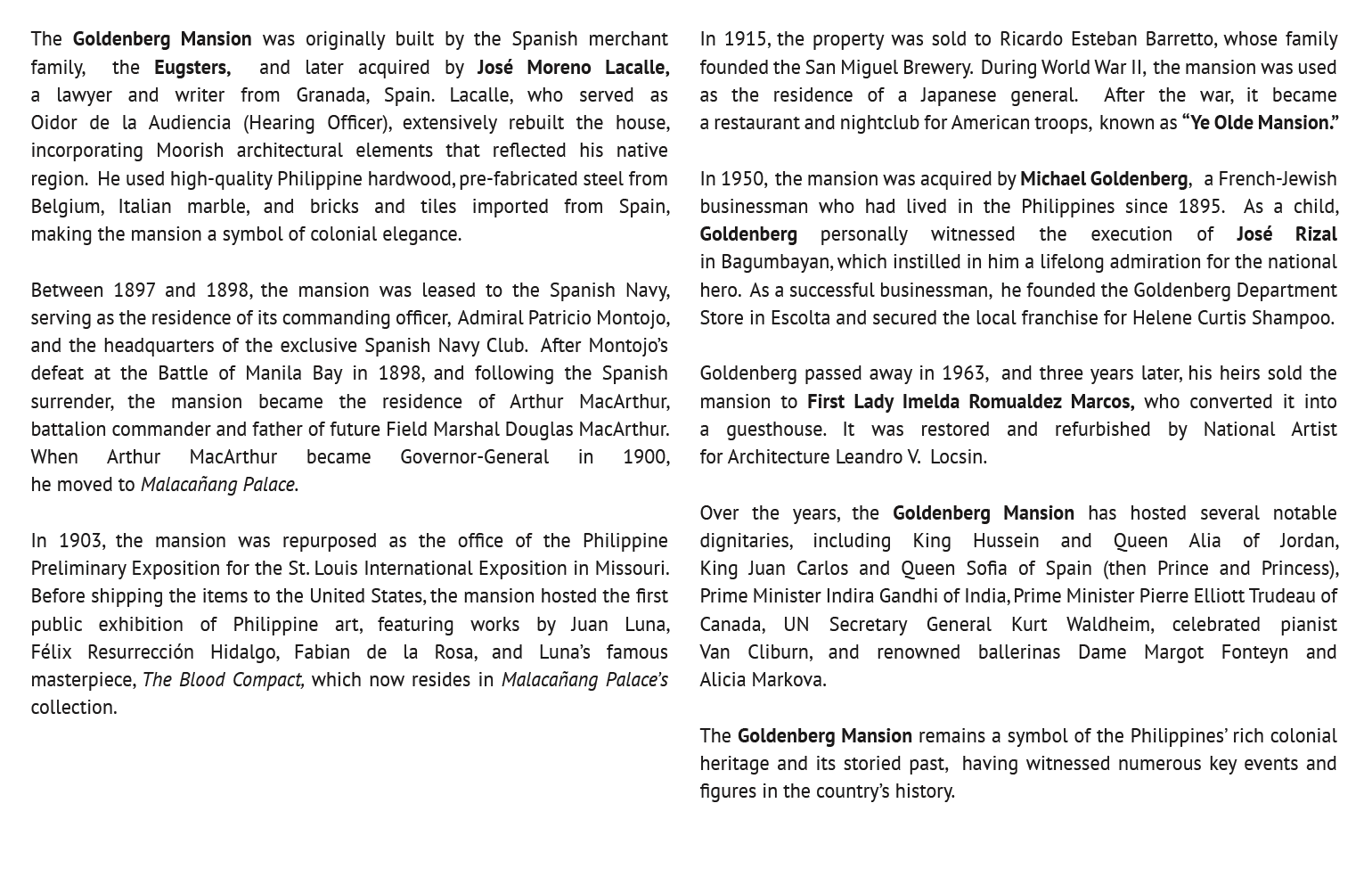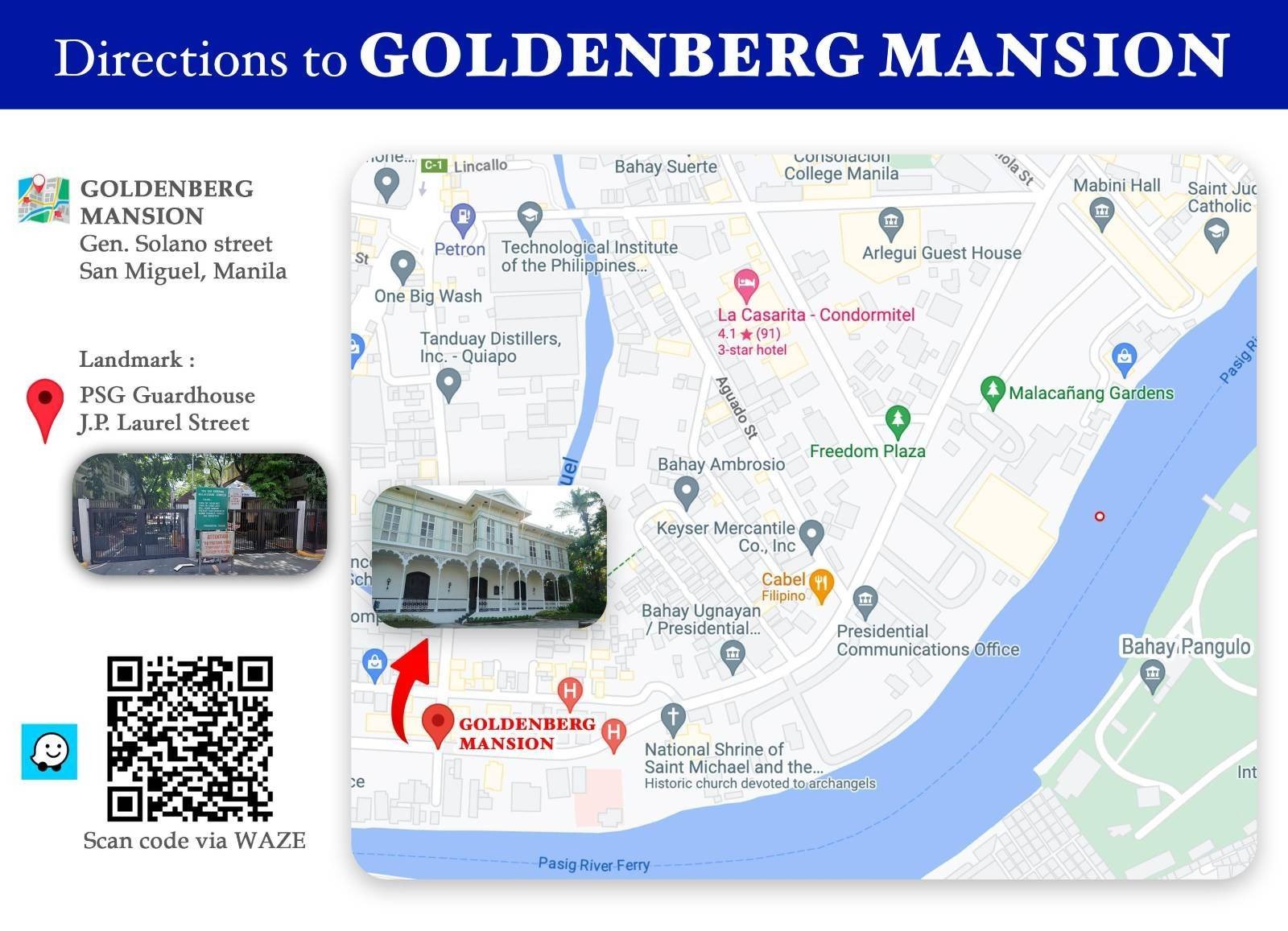








The Goldenberg Mansion was originally built by the Spanish merchant family, the Eugsters, and later acquired by José Moreno Lacalle, a lawyer and writer from Granada, Spain. Lacalle, who served as Oidor de la Audiencia (Hearing Officer), extensively rebuilt the house, incorporating Moorish architectural elements that reflected his native region. He used high-quality Philippine hardwood, pre-fabricated steel from Belgium, Italian marble, and bricks and tiles imported from Spain, making the mansion a symbol of colonial elegance.
Between 1897 and 1898, the mansion was leased to the Spanish Navy, serving as the residence of its commanding officer, Admiral Patricio Montojo, and the headquarters of the exclusive Spanish Navy Club. After Montojo’s defeat at the Battle of Manila Bay in 1898, and following the Spanish surrender, the mansion became the residence of Arthur MacArthur, battalion commander and father of future Field Marshal Douglas MacArthur. When Arthur MacArthur became Governor-General in 1900, he moved to Malacañang Palace.
In 1903, the mansion was repurposed as the office of the Philippine Preliminary Exposition for the St. Louis International Exposition in Missouri. Before shipping the items to the United States, the mansion hosted the first public exhibition of Philippine art, featuring works by Juan Luna, Félix Resurrección Hidalgo, Fabian de la Rosa, and Luna’s famous masterpiece, The Blood Compact, which now resides in Malacañang Palace’s collection.
In 1915, the property was sold to Ricardo Esteban Barretto, whose family founded the San Miguel Brewery. During World War II, the mansion was used as the residence of a Japanese general. After the war, it became a restaurant and nightclub for American troops, known as “Ye Olde Mansion.”
In 1950, the mansion was acquired by Michael Goldenberg, a French-Jewish businessman who had lived in the Philippines since 1895. As a child, Goldenberg personally witnessed the execution of José Rizal in Bagumbayan, which instilled in him a lifelong admiration for the national hero. As a successful businessman, he founded the Goldenberg Department Store in Escolta and secured the local franchise for Helene Curtis Shampoo.
Goldenberg passed away in 1963, and three years later, his heirs sold the mansion to First Lady Imelda Romualdez Marcos, who converted it into a guesthouse. It was restored and refurbished by National Artist for Architecture Leandro V. Locsin.
Over the years, the Goldenberg Mansion has hosted several notable dignitaries, including King Hussein and Queen Alia of Jordan, King Juan Carlos and Queen Sofia of Spain (then Prince and Princess), Prime Minister Indira Gandhi of India, Prime Minister Pierre Elliott Trudeau of Canada, UN Secretary General Kurt Waldheim, celebrated pianist Van Cliburn, and renowned ballerinas Dame Margot Fonteyn and Alicia Markova.
The Goldenberg Mansion remains a symbol of the Philippines’ rich colonial heritage and its storied past, having witnessed numerous key events and figures in the country’s history.
House Rules for the Goldenberg Mansion
These rules are in place to ensure a safe and enjoyable experience for everyone. Thank you for your understanding!

The Goldenberg Mansion hosts a variety of cultural and artistic events.
For details or inquiries, please send us an email.